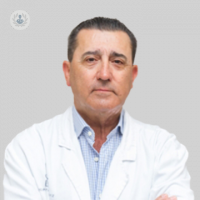What is arthroscopy?
Written by: Arthroscopy is a surgical technique in which a tiny camera called an arthroscope is used to examine or repair the tissues inside or around your shoulder joint. The arthroscope is inserted through a small incision in the skin.
Arthroscopy is a surgical technique in which a tiny camera called an arthroscope is used to examine or repair the tissues inside or around your shoulder joint. The arthroscope is inserted through a small incision in the skin.
During the procedure, the expert Traumatology follow these guidelines:
- Insert the arthroscope into your shoulder through a small incision. This is connected to a video monitor in the operating room.
- Inspect all the tissues of the shoulder joint in the area above it. These tissues include cartilage, bone, tendons and ligaments.
- Repair any damaged tissue. To do this, the surgeon makes 1-3 smaller incisions through which introduces other instruments.
- Repaired a tear in a muscle, tendon or cartilage and any damaged tissue is removed.
You can perform one or more of these procedures during surgery:
- Repair of the rotator cuff: the edges of the muscles are combined. The tendon attaches to the bone with sutures. Often called a anchoring systems are used with sutures to help fix the tendon to the bone. The anchors can be metal or absorbable, do not need to be removed after surgery.
- Surgery for impingement syndrome: Damaged or inflamed tissue is cleaned in the area above the shoulder joint. You can cut a ligament called coracoacromial and shave off the bottom of the acromion bone. A tumor or bone spur on the bottom of the acromion impingement syndrome usually causes swelling and pain in the shoulder.
- Surgery for shoulder instability: Bankart's injury is a torn labrum in the bottom of the shoulder. The labrum is cartilage that lines the edge of the shoulder joint, the failure can be repaired. You can also rebuild the ligaments that are attached to this area.
At the end of the surgery, the incisions with stitches will be closed and covered with a bandage. Most surgeons take pictures and / or video monitor during the procedure to show what they found and what repairs they made.
Why shoulder arthroscopy performed?
Arthroscopy is recommended for these shoulder problems:
- Ligaments or cartilage ring (labrum) damaged or broken - Shoulder instability, where the joint is loose and slides too much or getting out of the ball and socket joint dislocates
- A biceps tendon damaged or broken
- A torn rotator cuff
- A bone spur or inflammation around the rotator cuff
- Inflammation or damaged lining of the joint caused by diseases such as rheumatoid arthritis - Arthritis of the end of the clavicle
- Loose tissue that needs to be removed
- Shoulder impingement syndrome, to make more room for the shoulder to move around.
Shoulder arthroscopy involves the following risks:
- Shoulder stiffness
- Failure of the surgery to relieve symptoms
- Failure of the repair to heal
- Shoulder weakness
- Injury to a blood vessel or nerve
What difference has the arthroscopy in connection with other surgical interventions?
Arthroscopy generally produces less pain and stiffness, fewer complications, a shorter hospital stays (if any) and a faster recovery than open surgery. By becoming the repair, the body needs time to heal and recover as much as open an arthroscopic surgery. Because of this, the time of recovery and rehabilitation can be long.
Surgical repair of a cartilage tear is done to stabilize the shoulder. Many people recover fully and shoulder remains stable. However, some people may still have instability after arthroscopic repair.
Using arthroscopy for repairs or tendonitis mentioned often relieves the pain, but the patient may not regain full strength.
What developments have appeared in arthroscopic surgery?
- Double row repair
- Technical transosseous
- Dorsi transfer or "latissimus dorsi"
- Subacromial spacer
- Usefulness of the glenohumeral joint viscosupplementation
- Utility of platelet-rich plasma in shoulder pathology
- Usefulness of stem cells in the repair of rotator cuff
- Microfraturas and Nanofracturas by biological stimulus
- New alternatives in the management of chondral lesions in the glenohumeral joint


